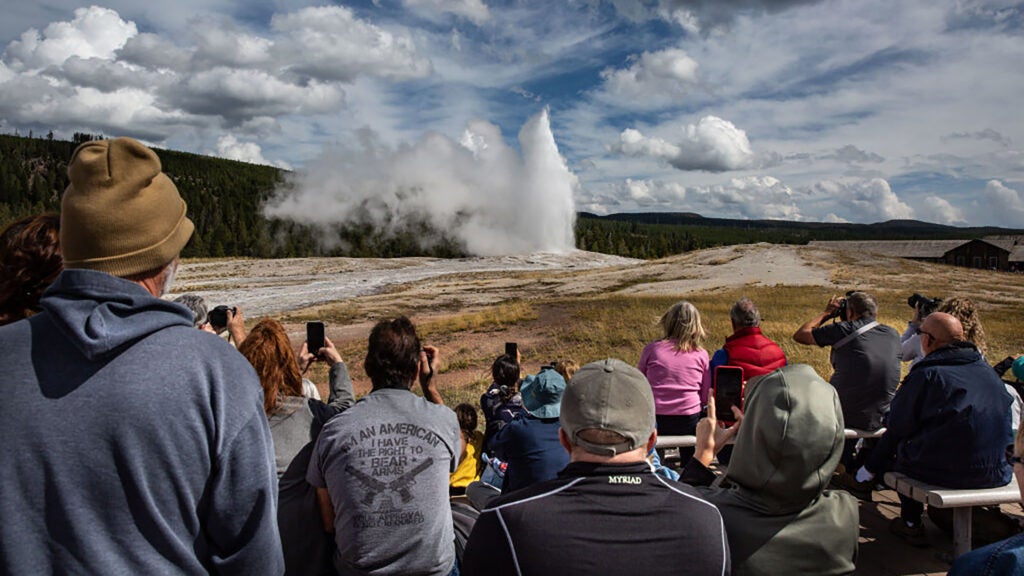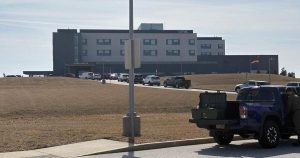By now you’ve probably heard about the staffing crisis gripping Yellowstone, Yosemite, and the nation’s other national parks.
On February 14, the National Park Service (NPS) delivered layoff notices to approximately 1,000 workers, or about five percent of its total workforce. The move generated headlines in national and local publications alike, and over the weekend, dozens of recently fired NPS workers penned heartfelt essays on social media about losing the jobs they loved.
“I am the toilet scrubber and soap dispenser,” a fired NPS ranger named Brian Gibbs wrote on Facebook. “I am the open trail hiked by people from all walks of life. I am the highlight of your child’s school day.”
Outside reached out to the NPS for comment, but did not hear back by the time this story published. The agency told Politico, “The NPS is assessing our most critical staffing needs for park operations for the coming season and is working to hire key positions. The NPS is committed to protecting public lands, infrastructure, and communities while ensuring public access.”
The workforce upheaval stems from the Trump Administration’s efforts to dramatically shrink the federal government, which in 2024 employed approximately 3 million people (not including the military). In January, the administration announced a hiring freeze on all federal agencies, and offered buyouts to government workers willing to resign. Since then, almost every wing of the U.S. government has been impacted by the belt tightening.
But the Park Service cuts are the ones that will impact the summer vacation plans of millions of Americans. Outside spoke to NPS experts and former employees about the staff changes to see how they will impact daily life at America’s favorite vacation destinations. We asked these experts whether park visitors will be able to see a difference when they hike on trails, arrive at visitor centers, or use the restroom.
The answer? You bet.
“Expect fewer services, less help, and fewer projects like trails or construction getting fixed,” says Kristen Brengel, the senior vice president of government affairs at the National Parks Conservation Association (NPCA), a non-profit advocacy group for the NPS. “You’ll need to lower your expectations.”
Which NPS Workers Were Cut?
Over the weekend, the NPCA tracked the layoffs and spoke to NPS staffers who lost their jobs. According to Brengel, the current cuts impacted all 63 U.S. national parks and all 433 areas managed by the Park Service. The cuts did not target specific jobs, she said, but were “indiscriminate.”
“We’ve heard from wildlife biologists, archaeologists, even wastewater treatment operators who were let go,” Brengel said. “We’re talking about people with incredible expertise losing jobs. It will throw some parks into a tailspin.”
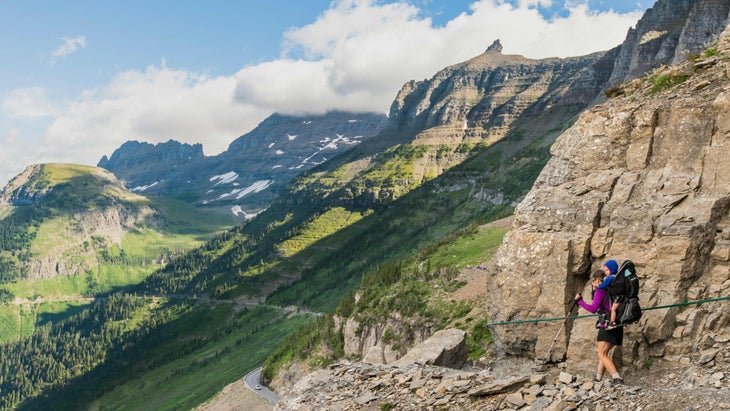
Rather than target specific positions, the cuts impacted employees with “probationary” status, a designation given to federal employees for the first year of their employment in a position. According to the New York Times, the strategy was in-line with the Trump Administrations’ plan to dismiss the 200,000 or so federal workers with this designation.
The letter sent to laid-off employees read like a termination notice for low performance, according to the Times. “The department determined that you have failed to demonstrate fitness or qualifications for continued employment because your subject matter knowledge, skills, and abilities do not meet the department’s current needs,” read the letter distributed to some NPS staff.
Brengel points out that not every probationary worker is new or unqualified. Some veteran NPS workers were given the status after they were promoted to managerial positions; it was also given to seasonal NPS employees who had recently been hired to year-round positions.
“The ripple effect of these firings will be felt immediately,” she said. “It’s going to be a huge brain drain to lose a lot of these positions.”
Gibbs, 41, is one such employee. Prior to taking a full-time position at Iowa’s Effigy Mounds National Monument, which is managed by the NPS, he had spent four years working as a seasonal interpretive ranger at Glacier National Park. Interpretive rangers help visitors understand the cultural significance of an area.
Gibbs took that expertise to his job at Effigy Mounds, where he managed educational programs for kids, among other jobs. “At such a small monument I wore many hats,” he told Outside. “On the day I got fired I was creating a program to take kids snowshoeing in the park.”
What Services Will Be Lost?
It may take several weeks to determine which services will be eliminated at each park. Brengel and others have told visitors to expect to encounter long lines, overflowing trash cans, unkempt bathrooms, and other drop-offs in service caused by a lack of manpower. One anonymous NPS employee told Politico to expect to see poop on trails. Brengel said that major construction projects started in 2024, such as trail maintenance or road paving, are likely to be left unfinished.
In the days since the layoffs, fired NPS employees have shared their stories—and the jobs the NPS is losing—with local and national media.
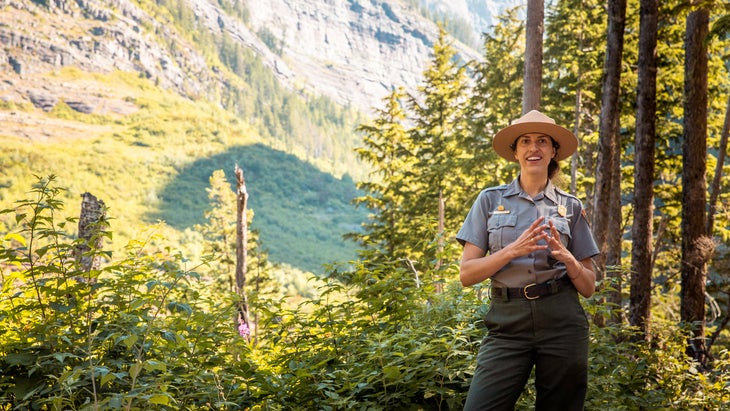
A worker named Olek Chmura told TV station Fox26News that he’d no longer pick up trash and scoop up feces at Yosemite National Park.
The New York Times interviewed multiple NPS workers impacted by the cuts, among them Helen Dhue, a park guide at Palo Alto Battlefield National Historic Park in Brownsville, Texas, and Stacy Ramsey, a river ranger in Arkansas’ Buffalo National River. The latter told the Times that she writes warnings for the general public when parts of the river are dangerous. “If no one is there to educate, it increases the risk of someone getting hurt on the river,” Ramsey told the Times.
Politico quoted an anonymous NPS ranger in California who wrote about his termination on Facebook. “I honestly can’t imagine how the parks will operate without my position,” he said. “I am the only EMT at my park and the first responder for any emergency.”
According to the Associated Press, 16 of the 17 supervisor positions at Wyoming’s Grand Teton National Park were axed. At Shenandoah National Park, trail maintenance workers and fee collectors lost their jobs.
Gibbs’s job at Effigy Mounds was focused on education. He developed classroom programs, took schools on tours of the area when they arrived on field trips, and also visited local schools to discuss the cultural significance of the park.
Effigy Mounds preserves 200 or so prehistoric earthworks that were built by pre-Columbian people. Some of the mounds are in the shapes of birds and bears.
Gibbs was one of two employees at Effigy Mounds to be let go. Just seven rangers remain, he said.
“Educating kids about the cultural resources at Effigy Mounds will come to a stop, and schools visiting will have to self-guide at the park,” Gibbs told Outside. “Kids and families are the ones who are going to lose out.”
What About the NPS Hiring Freeze?
Not all of the NPS news on Friday was bad. The Trump Administration published a memo saying agency receive an exemption from the federal hiring freeze to bring back some seasonal workers for the spring and summer.
The move allows the NPS to hire back 5,000 or so seasonal employees, whose jobs were rescinded in January when the freeze was announced across all federal agencies. Most parks rely heavily on seasonal workers, and each year the NPS hires between 7,000 and 8,000 of them to help during the busiest periods.
The reaction to the news was mixed.
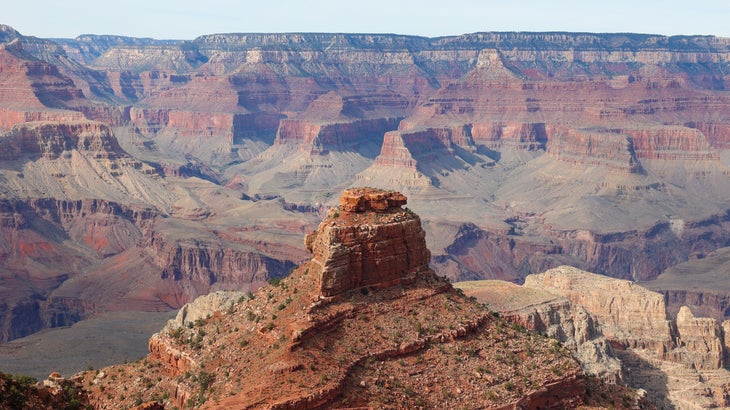
“Exempting National Park Service seasonal staff from the federal hiring freeze means parks can fill some visitor services positions,” said Theresa Pierno, CEO of the NPCA, in a statement. “But with peak season just weeks away, the decision to slash 1,000 permanent, full-time jobs from national parks is reckless and could have serious public safety and health consequences.”
The timeline for hiring back seasonal workers has not been made public. According to Politico, only about 300 seasonal positions had been granted exemptions as of February 18.
Brengal pointed out that seasonal workers might not be able to replace the full-time NPS employees who were lost in the layoffs. Some of the cut NPS workers who spoke to the NPCA were coordinators of seasonal labor, she said. For example, the 16 managers who lost their jobs at Grand Teton National Park help oversee seasonal workers.
“Seasonal workers can’t replace full-time positions,” she said.
Which Parks Have Been Hit the Hardest?
It may take until the busy summer months to assess the true impact of by Friday’s cuts on individual national parks and monuments. Brengel said that small parks with tiny staffs may suffer the worst, and that cuts there would force remaining employees to make tough choices.
“They may have to choose between keeping the visitor center open and the campground open,” she said. “These are the choices that smaller parks are going to have to make.”
But other parks are already feeling the pinch caused by the hiring freeze, layoffs, and other policy changes. According to the San Francisco Chronicle, Yosemite National Park will abandon its reservation system, which was made permanent earlier this year. Sources told the outlet that the park tabled the plan after the Trump Administration asked to review it.
What’s the Human Cost?
Like all mass-layoffs, the NPS cuts have upended lives and forced thousands to seek new livelihoods. Ramsey told the Times that she lost her job after spending three years working a contract position with the NPS just to get her foot in the door.
Gibbs echoed this sentiment when he spoke to Outside. He called his position at Effigy Mounds National Monument a “dream job,” and said that losing the position has forced his family into a dire financial situation. “We’re sad and frightened, and feel like we’ve had the rug pulled out from under us,” he said. Gibbs and his wife have a four-year-old son, and they are expecting a second child this year. Gibbs said that his wife had to skip a monitoring appointment with her doctor after the family’s health insurance was terminated. “We feel frozen about what our next steps are,” he said.
The cuts have prompted action in some communities. Over the weekend, protesters stood outside visitors centers at Joshua Tree and Yosemite National Parks. On Tuesday, February 18, NPS workers and their friends and families lined the streets of Estes Park, Colorado, just outside Rocky Mountain National Park, to protest.
Should You Visit a National Park this Summer?
The sources we spoke to still encouraged Americans to visit National Parks this summer, despite the cuts. Yes, trails may be closed, parking lots may be messy, and lines may be longer than normal.
Instead, Gibbs said NPS visitors should do advanced homework before traveling to see which trails closed, and which services are limited. Reconsider trips deep into the backcountry, since manpower for lifesaving or rescues may be diminished. And stay on the trails.
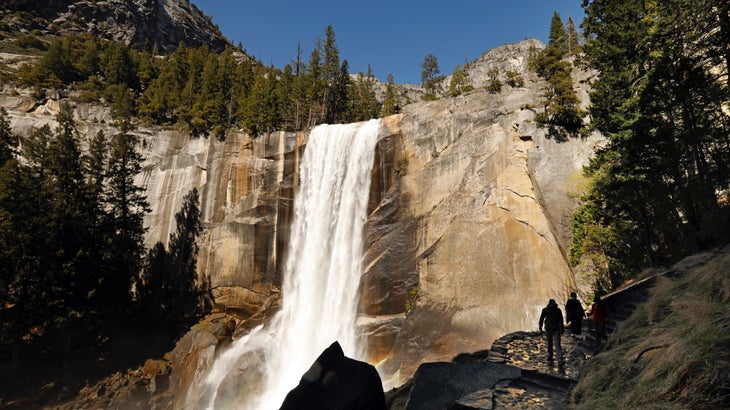
“Know that there’s probably going to be a disruption in safety and resource protection,” Gibbs said.
Gibbs and Brengel urged visitors to have patience and understanding with the NPS employees who are manning the parks. Brengel said visitors should consider saying “thank you” to NPS rangers.
“Think about what a difficult time it must be for them, knowing that they may be next on the chopping block,” Brengel said. “They are going to be stretched thin, but they are the heroes for sticking it out.”



